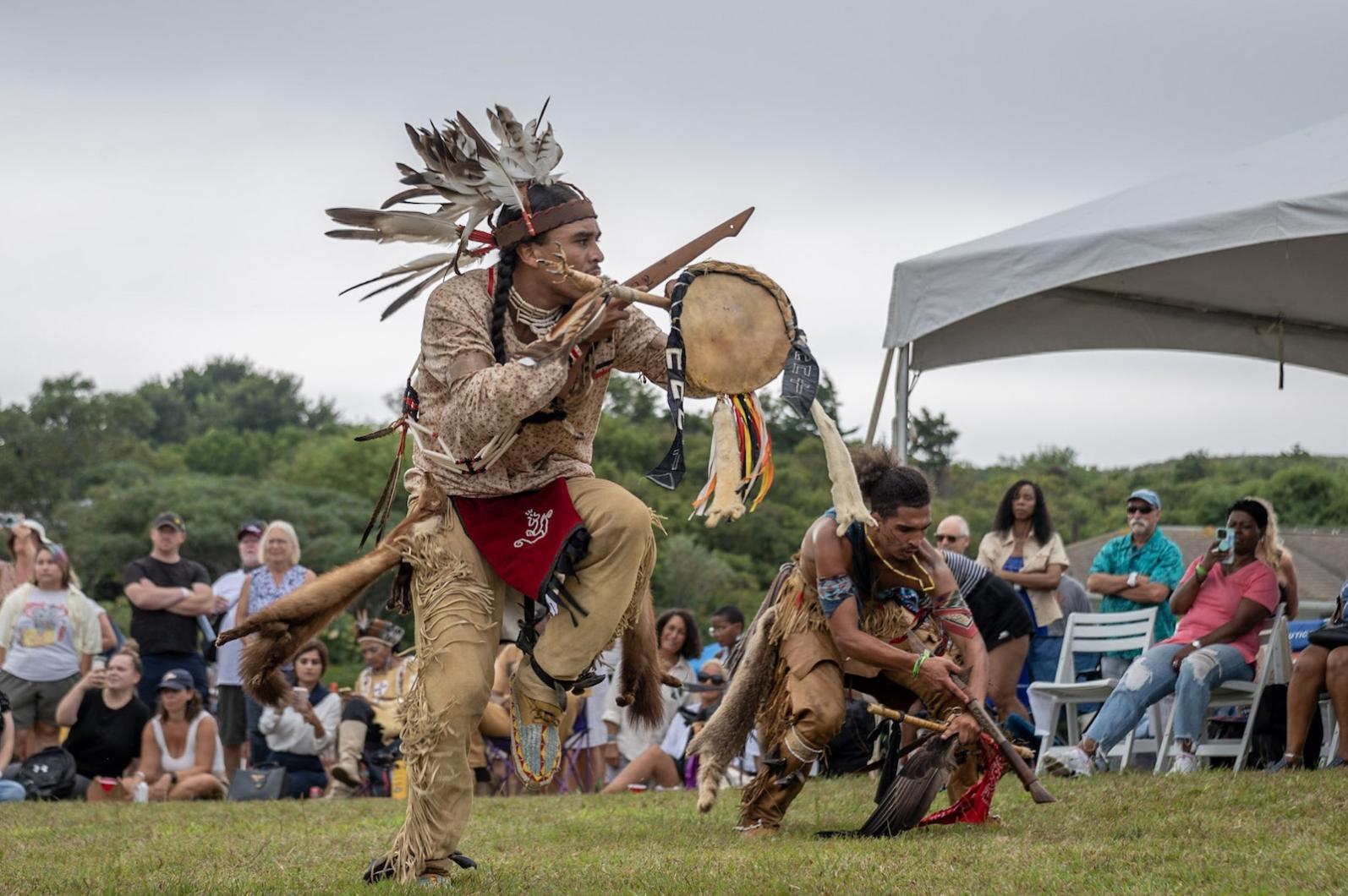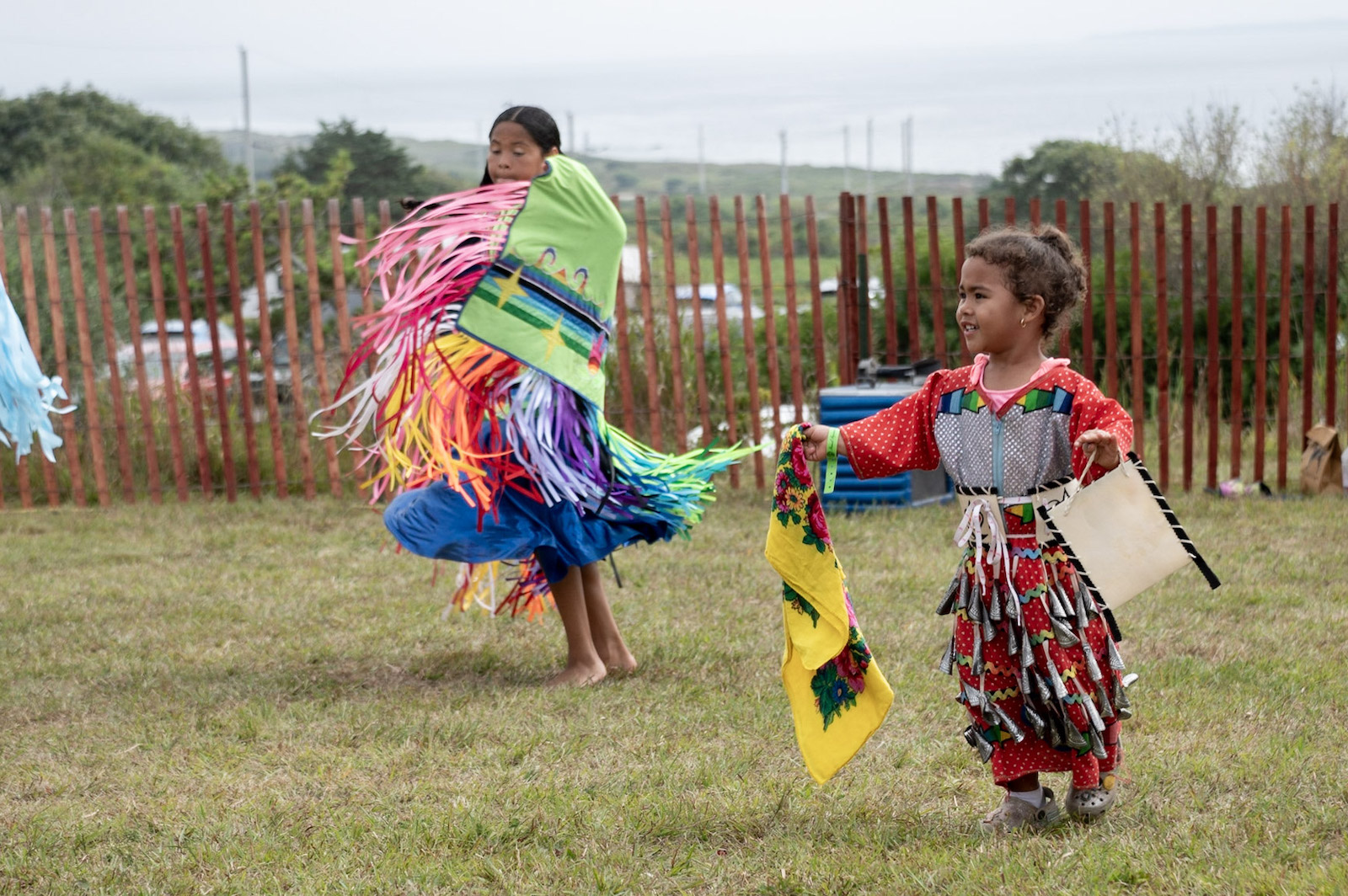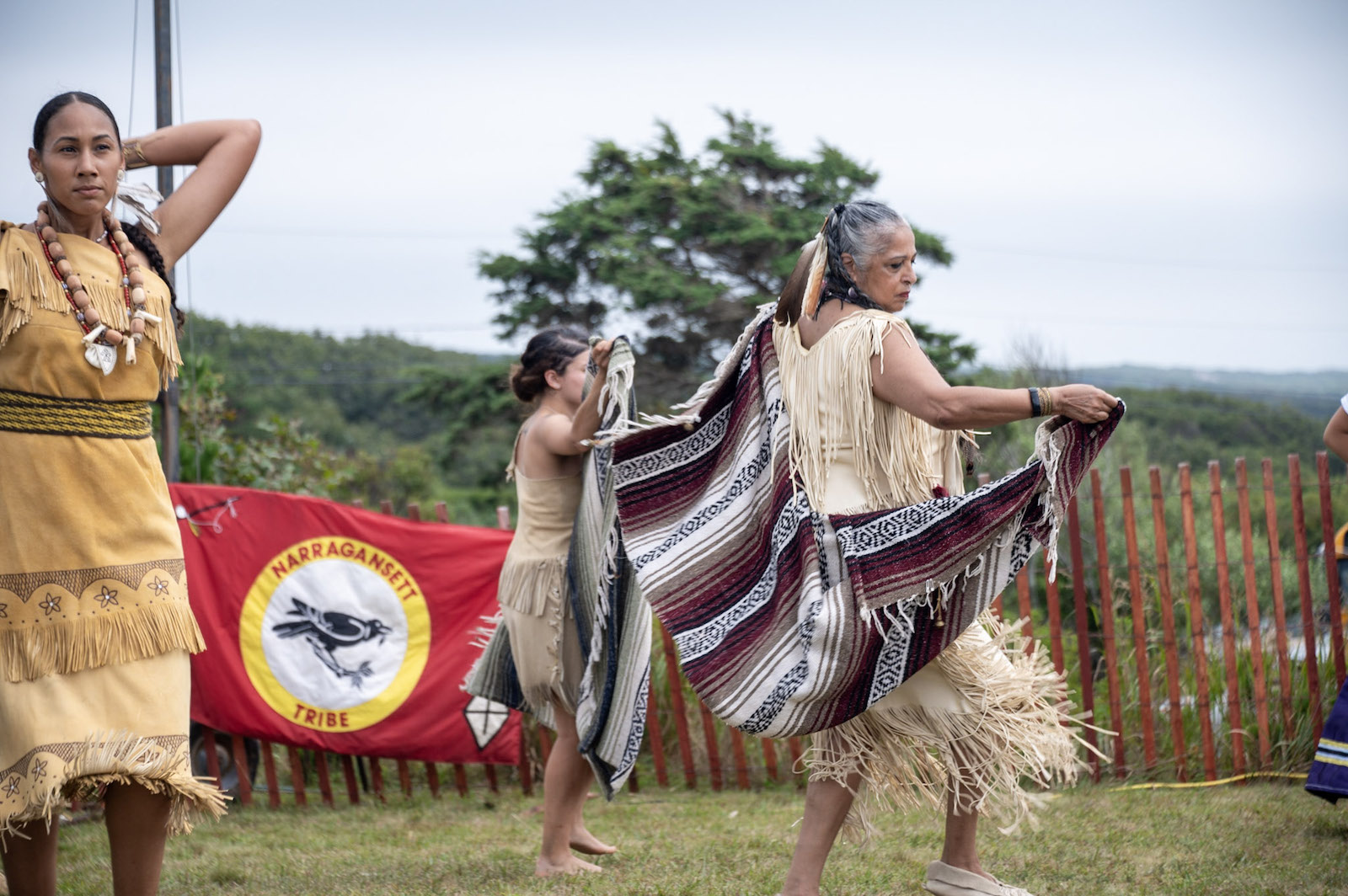A plume of smoke curled against the backdrop of the rolling waves on Aquinnah’s south shore this weekend, as members of the Wampanoag Tribe of Gay Head (Aquinnah) and native peoples from across the east coast gathered for the annual Aquinnah Powwow.
The air smelled of burning sage on Saturday morning, as Aquinnah tribal medicine man Jason Baird smudged the dance circle and performers as they changed into their regalia. While the dancers prepared, attendees lined up for food from chef Sherry Pocknett, serving a selection of smoked seafood along with venison and buffalo.
Emcee Justin Beatty introduced the festivities.
“You’re experiencing something very special here,” he said, introducing the event as an intertribal pow wow. Along with the Wampanoag tribes from Aquinnah, Mashpee and Herring Creek, dignitaries of the Taino from Puerto Rico participated in the event, as did members of other tribes from around the northeast.
Three native drumming groups provided music for the dancers: the Alamoosic Lake Singers, Herring Creek Singers and the Aquinnah-based Black Brook Singers. A constant rhythmic beat backed each of their songs, as one singer took the lead and the others joined in.
“The beat represents the heartbeat of all things, so it’s steady,” Mr. Beatty said.
That steady backing accompanied the beginning of the grand entry Saturday morning, as tribal leaders and dignitaries entered a procession around the dance circle bearing the United States and Massachusetts flags, and the flags of the Mashpee, Aquinnah, Herring Creek and Narragansett tribes.
Jason Baird spoke after the procession.
“We don’t exist here in a vacuum, as you can see. There are so many friends, and so many family members from so many nations,” he said.
Mr. Baird went on to offer a prayer in the Wopanaak language, then in English.
“Thank you for this land that we stand on,” he said. “We ask our ancestors to look down on us with love, and continue to bestow their wisdom on us, and grace.”
Following the procession, the dances kicked off with a ceremony honoring tribal and nontribal veterans, before going into the intertribal dance, where a variety of styles, frenetic and reserved, graceful and exuberant, all performed together.
Mr. Beatty then encouraged members of the audience to enter the circle for a “round dance.”
“It’s a really easy dance to do,” he promised, as tribal members joined hands with audience members, forming two concentric circles for the traditional welcoming dance.
Next up was the first category proper, the men’s eastern war dance.
“This was the style of war dance in the northeast, where we are,” Mr. Beatty said, as the performers entered the circle in richly-tasseled deerskin regalia. No war dance is the same but each was energetic and filled with motion, the dancers spinning low to the ground and stomping their feet to the drumbeat.
The following category, women’s eastern blanket, was a calmer dance.
“It tells the story of a journey through womanhood, and it was also a courting dance,” Mr. Beatty said, noting that the dance — common to Algonquin-speaking people such as the Wampanoag — has grown in popularity in recent years. Draped in colorful, patterned blankets, the performers slowly turned and twisted with the cloth in a graceful performance.
Dancing continued throughout the day and into Sunday, in styles ranging from grass stomping to northern traditional to women’s fancy, for youth and adult dancers.
“When we dance, we create,” said Mr. Beatty. “It’s our way of creativity."











Comments
Comment policy »